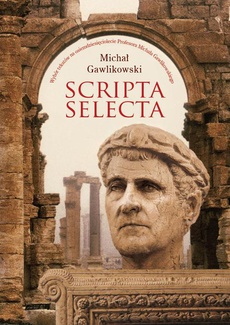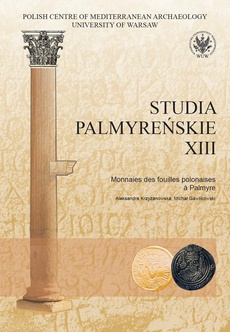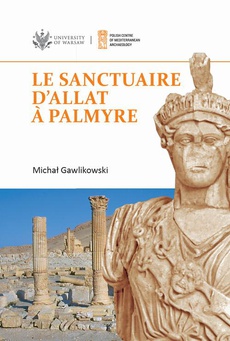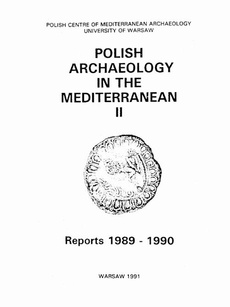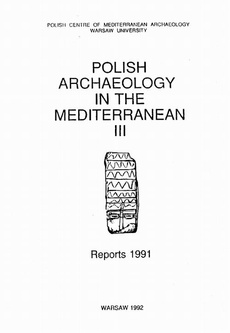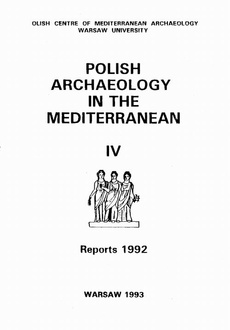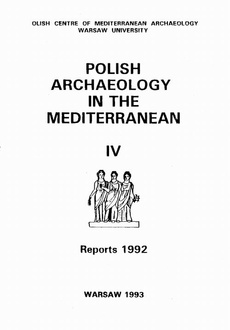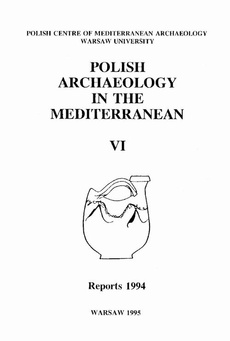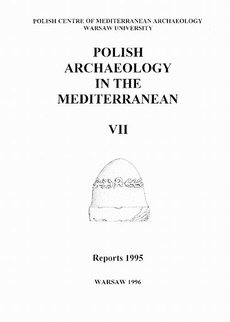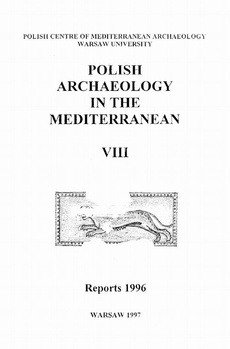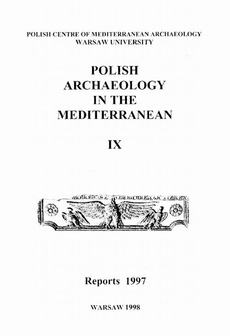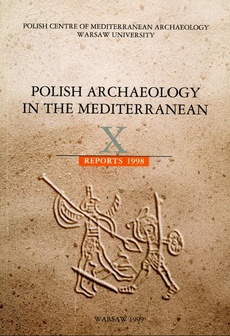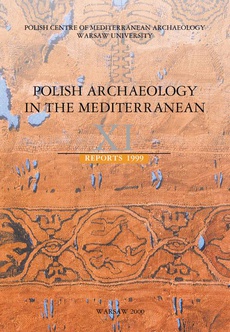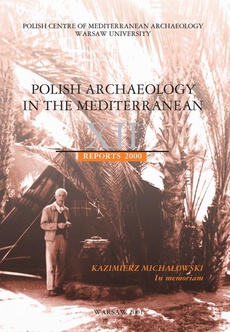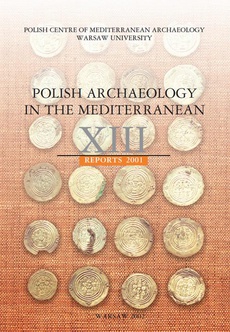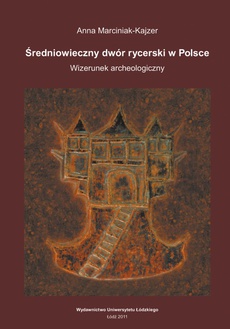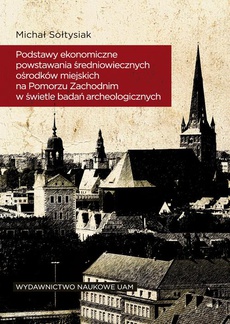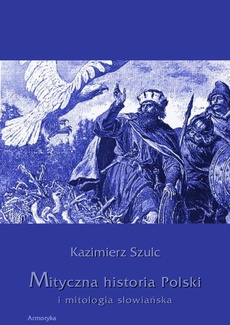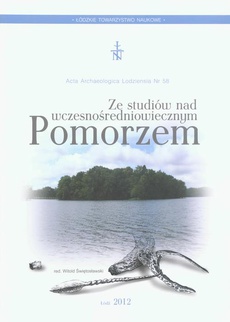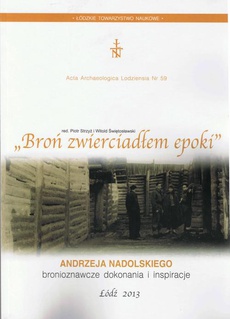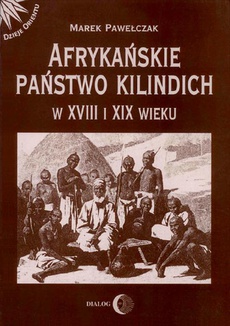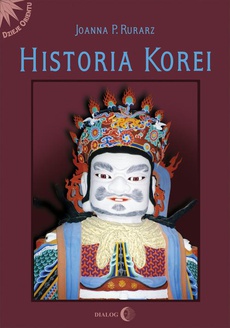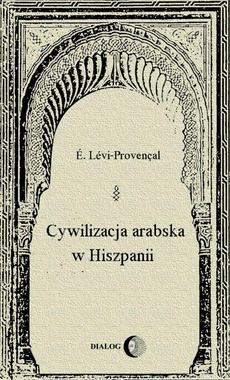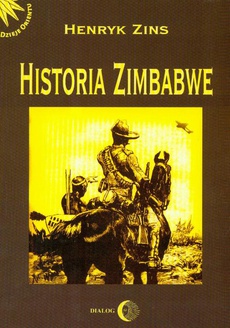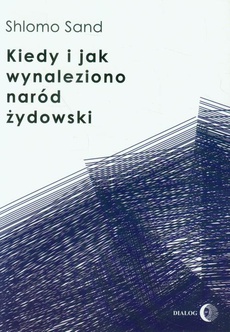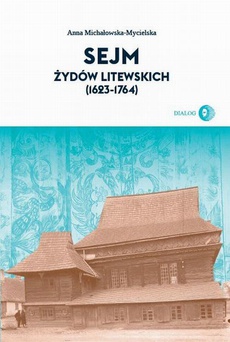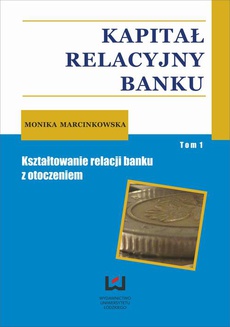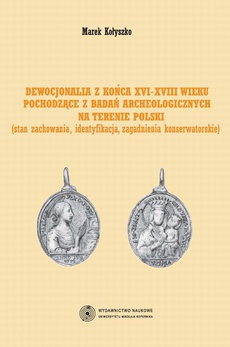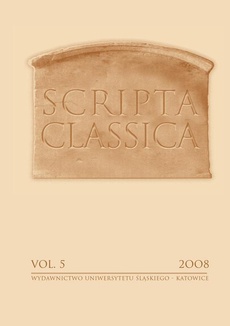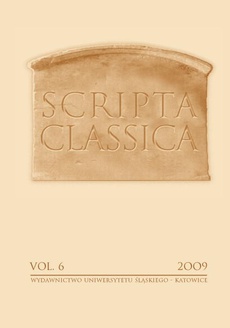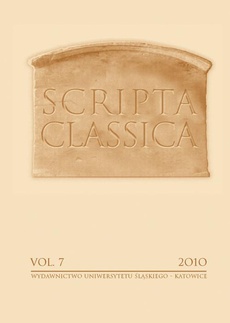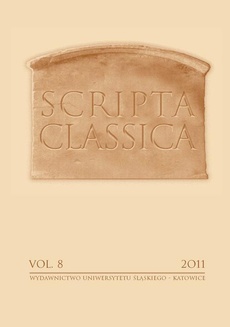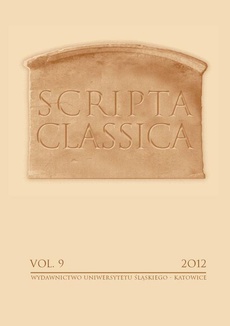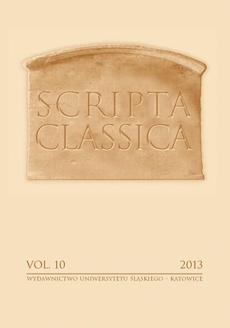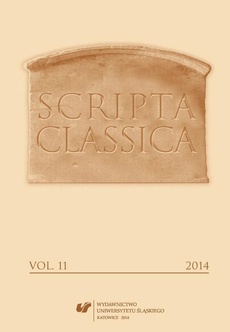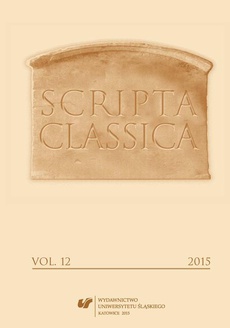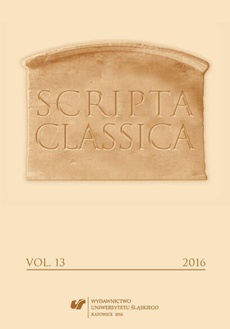INNE EBOOKI AUTORA
Scripta selecta
Wybór tekstów na osiemdziesięciolecie Profesora Michała Gawlikowskiego
Autor:
Redakcja:
Wydawca:
Format:
epub, mobi, pdf, ibuk
Księga jubileuszowa dedykowana znakomitemu archeologowi Profesorowi Michałowi Gawlikowskiemu, który kierował polskimi wykopaliskami w Palmyrze w latach 1973-2011.
Publikacja zawiera 65 artykułów dotyczących funkcjonowania Palmyry, od architektury i rzeźby po religię i handel. Teksty te ukazały się w latach 1966-2010 w różnych czasopismach oraz tomach zbiorowych i obejmują te badania z okresu czterdziestu pięciu lat działalności Profesora, które nadal wydają się być interesujące dla czytelnika.
Nowsze prace tego samego autora można łatwo znaleźć na Academia.edu i na innych stronach. W szczególności nie uwzględniono dokumentów dotyczących mitreum w Hawarte w Syrii (gdzie prace wykopaliskowe trwały do 2009 roku) oraz stanowiska Ajnuna w Arabii Saudyjskiej, na którym badania rozpoczęły się w 2014 roku.
******
Scripta selecta. A selection of texts for the 80th anniversary of Professor Michał Gawlikowski
The jubilee book is dedicated to the outstanding archaeologist, Professor Michał Gawlikowski, who was in charge of the Polish excavations in Palmyra in the years 1973–2011.
The publication contains 65 articles on the different aspects of Palmyra, from architecture and sculpture to religion and commerce. The texts were published from 1966 to 2010 in various journals as well as collective volumes, and they cover the selected research of forty five years which still seem to be of some interest for the public.
More recent papers by the same author can be easily found on Academia.edu and other sites. In particular, papers related to the mithraeum at Hawarte in Syria (excavated until 2009) and to the site of Aynuna in Saudi Arabia, started in 2014, are not included.
*********
Michał Gawlikowski (ur. 1940 w Warszawie) – archeolog i epigrafik, profesor archeologii w Centrum Archeologii Śródziemnomorskiej Uniwersytetu Warszawskiego, w 1963 roku ukończył archeologię śródziemnomorską na Uniwersytecie Warszawskim u prof. Kazimierza Michałowskiego, w latach 1972-2010 wykładał archeologię Bliskiego Wschodu na UW, w latach 1989–1991 dyrektor Instytutu Archeologii UW, w latach 1991–2005 dyrektor Polskiego Centrum Archeologii Śródziemnomorskiej UW, kierownik wykopalisk w Palmyrze w Syrii (1973–2011), w Hawarte w Syrii (1998–2009), w Hatrze w Iraku (1990), w Dżerasz w Jordanii (1982–1984) oraz w Bidżan w Iraku (1979–1981), w Gerazie (Jordania), a ostatnio w Aynuna (Arabia Saudyjska). Jego imię jest jednak nierozerwalnie związane z Palmyrą. Odkrył m.in. świątynię Allata w Palmyrze i mitraum w Hawarte.
Opublikował: "Pomniki grobowe Palmyry" (1970), "Świątynia palmyreńska. Badanie epigrafii i topografii historycznej" (Palmyra VI, 1972), "Palmyra" (z Jean Starcky, Paryż 1985), "Palmyra" (2010, po polsku), a także ponad 200 artykułów na temat kultury Palmyry, archeologii Syrii w okresie rzymskim, bizantyjskim i arabskim, epigrafiki aramejskiej oraz handlu międzynarodowego w basenie Morza Śródziemnego i Morza
Czerwonego. W latach 1995-1996 członek Institute for Advanced Study w Princeton, członek korespodent Deutsches Archäologisches Institut w Berlinie (od 1985) i Académie des Inscriptions et Belles-Lettres w Paryżu (od 2004), od 2004 roku korespondent zagraniczny Akademii Inskrypcji i Belles-Lettres. Emerytowany pracownik Instytutu Archeologii na UW.
---------
Michał Gawlikowski - born in 1940 in Warsaw, he studied Mediterranean Archaeology at the University of Warsaw under Kazimierz Michałowski (graduated 1963). He was professor of University of Warsaw where he taught Archaeology of the Near East from 1972 to 2010. He was director of Polish Centre of Mediterranean Archaeology from 1991 to 2005, member of Institute for Advanced Study in Princeton in 1994–1995, corresponding member of Deutsches Archäologisches Institut, Berlin (since 1985) and Académie des Inscriptions et Belles-Lettres in Paris since 2004. From 1973 to 2011 he was director of Polish excavations in Palmyra and also directed excavations in Hawarte (Syria), Hatra and Bijan (Iraq), Gerasa (Jordan), and recently Aynuna (Saudi Arabia).
---------
Michał Gawlikowski - né a Varsovie en 1940. Il a obtenu la maîtrise en archéologie méditerranéenne a l’Université de Varsovie en 1963, sous Kazimierz Michałowski. Professeur a cette université, ou il a enseigné l’archéologie du Proche-Orient de 1972 a 2010. Directeur du Centre polonais d’archéologie méditerranéenne de 1991 a 2005, il est correspondant de Deutsches Archäologisches Institut a Berlin (depuis 1985) et de l’Académie des Inscriptions et Belles-Lettres, Paris (depuis 2004) et membre de l’Institute for Advanced Study, Princeton (1994–1995). A partir de 1973 et jusqu’a 2011, il a dirigé les fouilles polonaises a Palmyre. Il a également fouillé a Hawarte en Syrie, a Hatra et sur l’île de Bidjan en Iraq, a Gerasa en Jordanie, enfin récemment a Aynuna en Arabie Séoudite.
| Rok wydania | 2022 |
|---|---|
| Liczba stron | 640 |
| Kategoria | Archeologia |
| Wydawca | Uniwersytet Warszawski |
| ISBN-13 | 978-83-235-4602-3 |
| Numer wydania | 1 |
| Język publikacji | angielski |
| Informacja o sprzedawcy | ePWN sp. z o.o. |
POLECAMY
Ciekawe propozycje
Spis treści
| PLACES OF ORIGINAL PUBLICATIONS | |
| PALMYRA: ARCHITECTURE | |
| 1. Les défenses de Palmyre, Syria 51, 1974, p. 231–242, | |
| pl. IX–XIV | 13 |
| 2. La première enceinte de Palmyre, in: La | |
| fortification dans l’histoire du monde grec (Actes du | |
| colloque international, Valbonne 1982), Paris 1987, pp. | |
| 51–54 | 27 |
| 3. Les principia de Dioclétien à Palmyre. Projet et | |
| réalisation, Le dessin d’architecture dans les sociétés | |
| antiques (Actes du Colloque, 26–28 janvier 1984), | |
| Strasbourg 1985, pp. 283–290 | 32 |
| 4. The City of the Dead, in: E. Cussini (ed.), A | |
| Journey to Palmyra. Collected Essays to Remember | |
| Delbert R. Hillers, ed. Eleonora Cussini, Brill, | |
| Leiden-Boston 2005, pp. 44–59 | 37 |
| 5. Beyond the Colonnades: The Domestic Architecture in | |
| Palmyra, in: C. Galor, T. Waliszewski (eds), From | |
| Antioch to Alexandria. Recent Studies in Domestic | |
| Architecture, Warsaw 2008, pp. 79–93 | 57 |
| PALMYRA: INSCRIPTIONS | |
| 6. Nouvelles inscriptions du Camp de Dioclétien, Syria | |
| 47, 1970, pp. 313–325 | 73 |
| 7. Palmyrena, Berytus 19, 1970, pp. 65–86 | 83 |
| 8. Inscriptions de Palmyre, Syria 48, 1971, pp. 407– | |
| 426, pl. XXIII–XXIV | 108 |
| 9. Liturges et custodes. Sur quelques inscriptions | |
| palmyréniennes, Semitica 23, 1973, pp. 113–124 | 122 |
| 10. Le tadmoréen, Syria 51, 1974, pp. 91–103 | 129 |
| 11. Allat et Baalshamîn, in: Mélanges offerts à Paul | |
| Collart. Cahiers d’archéologie romande 5, Lausanne | |
| 1976, pp. 197–203 | 137 |
| 12. Deux publicains et leur tombeau, Syria 75, 1998, | |
| pp.–151 | 145 |
| 13. Un nouveau temple d’Allat dans une inscription | |
| revisitée, Semitica 51, 2001, pp. 57–64 | 152 |
| PALMYRA: COMMERCE | |
| 14. Palmyre et l’Euphrate, Syria 60, 1983, pp. 53–68 | |
| 161 | |
| 15. Le commerce de Palmyre sur terre et sur eau, in: | |
| L’Arabie et ses mers bordières I. Itinéraires et | |
| voisinages, Lyon 1988, pp. 163–172 | 175 |
| 16. Le péage à Palmyre en 11 après J.-C. (with Khaled | |
| As’ad), Semitica 41/42, 1993, pp. 163–172 | 185 |
| 17. Palmyra as a Trading Centre, Iraq 56, 1994, pp. 27– | |
| 33 | 191 |
| PALMYRA: SCULPTURE | |
| 18. Un nouveau type d’Héraclès à Palmyre, Études et | |
| Travaux 3, 1966, pp. 142–149 | 203 |
| 19. Remarques sur l’usage de la fibule à Palmyre, in: | |
| Mélanges offerts à Kazimierz Michałowski, Warszawa | |
| 1966, pp. 411–419 | 211 |
| 20. Une tête d’Athéna, Études et Travaux 26, 1983, pp. | |
| 89–98 | 219 |
| 21. Un banquet dionysiaque à Palmyre, Études et Travaux | |
| 15, 1991, pp. 158–161 | 226 |
| 22. The Athena of Palmyra, Archeologia 47, 1996, pp. | |
| 21–32 | 230 |
| 23. The Lions of Allat, Graeco-Arabica 9/10, | 2004 |
| (Festschrift Vasilios Christides), pp. 151–162 | 250 |
| 24. A lonely hunter from Palmyra, in: J.M. | |
| Burdukiewicz, K. Cyrek, P. Dyczek, K. Szymczak (eds), | |
| Understanding the Past. Papers offered to Stefan K. | |
| Kozłowski, Warszawa 2009, pp. 123–129 | 258 |
| PALMYRA: HISTORY | |
| 25. Palmyra: from a Tribal Federation to a City, in: | |
| K.S. Freyberger, A. Henning, H. von Hessberg (ed.), | |
| Kulturkonfl ikte im Vorderen Orient an der Wende vom | |
| Hellenismus zur römischen Kaiserzeit, Rahden 2003, pp. | |
| 7–10 | 269 |
| 26. Les Arabes en Palmyrène, H. Lozachmeur (ed.), La | |
| présence arabe dans le Croissant fertile avant | |
| l’Hégire, Paris 1995, pp. 103–108 | 274 |
| 27. Les princes de Palmyre, Syria 62, 1985, pp. 251–261 | |
| 279 | |
| 28. Odainat et Hérodien, rois des rois, Mélanges de | |
| l’Université Saint-Joseph, 60, 2007, pp. 289–311 | 288 |
| 29. Odainat of Palmyra between Rome and Persia, in: E. | |
| Dąbrowa, M. Dzielska et al. (eds), Hortus Historiae. | |
| Księga pamiątkowa ku czci profesora Józefa Wolskiego w | |
| setną rocznicę urodzin, Kraków 2010, pp. 467–479 | 305 |
| 30. The royalty from Palmyra once again, in: B. Bastl, | |
| V. Gassner, U. Muss (eds), Zeitreisen. Syrien – Palmyra | |
| – Rom, Festschrift für Andreas Schmidt-Colinet zum 65. | |
| Geburtstag, Wien 2010, pp. 65–70 | 313 |
| 31. The Roman Army in Palmyra under Tiberius, Studia | |
| Palmyreńskie XI, 2010, pp. 49–54 | 320 |
| 32. The Imperial Cult in Palmyra under the Antonines | |
| (with Khaled As‘ad), Studia Palmyreńskie XI, 2010, pp. | |
| 43–48 | 326 |
| PALMYRA: RELIGION | |
| 33. A propos des reliefs du temple des Gaddê a Doura, | |
| Berytus 18, 1969, pp. 105–112 | 335 |
| 34. Aus dem syrischen Götterhimmel. Zur Ikonographie | |
| der palmyrenischen Götter, Trierer Winckelmannsprogramm | |
| I/II, Mainz 1980, pp. 19–26 | 340 |
| 35. Les dieux associés. Notes sur un bas-relief votif | |
| de la Palmyrène, in: Iconographie classique et | |
| identités régionales, BCH Supplément XIV, 1986, pp. | |
| 389–393 | 354 |
| 36. L’hellénisme et les dieux de Palmyre, in: O | |
| Ellenismos stin Anatoli, European Cultural Centre of | |
| Delphi, Athina 1991, pp. 245–256 | 358 |
| 37. Les oreilles de cheval ou un souvenir de la | |
| Décapole à Palmyre, in: Tranquillitas. Mélanges en | |
| l’honneur de Tran tam Tinh, Université Laval, Québec | |
| 1994, pp. 199–206 | 367 |
| 38. Du ḥamana au naos. Le temple palmyrénien hellénisé, | |
| Topoi 7/2, 1997, pp. 837–849 | 372 |
| 39. Héraclès au désert. Autel dédié à Héraclès-Nergal, | |
| in: Agathos Daimon. Mythes et Cultes, Etudes | |
| d’iconographie en l’honneur de Lilly Kahil, BCH | |
| supplément 38, 2000, pp. 155–160 | 381 |
| 40. The Statues of the Sanctuary of Allat in Palmyra, | |
| in: Y.Z. Eliav, E.A. Friedland, Sh. Herbert (eds), The | |
| Sculptural Environment of the Roman Near East. | |
| Reflections on Culture, Ideology, and Power, Leuven– | |
| Dudley MA 2008, pp. 397–411 | 386 |
| PALMYRA: BYZANTINE AND ISLAMIC | |
| 41. Le groupe épiscopal de Palmyre, in: C. Evers, A. | |
| Tsingarida (éd.), Rome et ses provinces. Genèse et | |
| diffusion d’une image du pouvoir. Hommages à Jean- | |
| Charles Balty, Bruxelles 2001, pp. 119–127 | 397 |
| 42. Palmyra in the Early Islamic Times, in: K. Bartl, | |
| Abd al-Razzaq Moaz (eds), Residences, Castles, | |
| Settlements. Transformation Processes from Late | |
| Antiquity to Early Islam in Bilad al-Sham (Conference | |
| DAI Damascus 2006), 2009, pp. 89–96 | 404 |
| VARIA | |
| THE DESERT AND ITS ROUTES | |
| 43. Les Arabes de Syrie dans l’Antiquité, in: K. van | |
| Lerberghe and A. Schoors (eds), Immigration et | |
| Emigration within the Ancient Near East. Festschrift E. | |
| Lipiński, Leuven 1995, pp. 83–92 | 417 |
| 44. Arabes et Arabies dans l’Antiquité, Topoi 14, 2006, | |
| pp. 41–46 | 424 |
| 45. The Syrian Desert under the Romans, in: S.E. Alcock | |
| ed., The Early Roman Empire and the East, Oxford 1997, | |
| pp. 37–54 | 429 |
| 46. La route de l’Euphrate d’Isidore à Julien, P.-L. | |
| Gatier, B. Helly, J.-P. Rey-Coquais (éd.), Géographie | |
| historique au Proche-Orient: Syrie, Phénicie, Arabie | |
| grecques, romaines et byzantines, (Actes de la Table | |
| Ronde, Valbonne 16–18 septembre 1985), Paris 1988, | |
| pp. 77–98 | 445 |
| 47. L’empereur Julien sur les bords de l’Euphrate, A. | |
| Sérandour (éd.), Des Sumériens aux Romains d’Orient. La | |
| perception géographique du monde, Paris 1997, pp. 145– | |
| 155 | 462 |
| 48. Les rivières fantômes du désert oriental, Ktema 17, | |
| 1992 (Hommage à Edmond Frézouls), pp. 169–179 | 471 |
| 49. Thapsacus and Zeugma. The crossing of the Euphrates | |
| in Antiquity, Iraq 58, 1996, pp. 123–133 | 482 |
| 50. Crossing to Kaneš, in: O. Drewnowska (ed.), Here | |
| and There across the Ancient Near East. Studies in | |
| Honour of Krystyna Łyczkowska, Warszawa 2009, pp. 44–51 | |
| 496 | |
| TEMPLES AND SANCTUARIES | |
| 51. The Sacred Space in Ancient Arab Religions, in: A. | |
| Hadidi (ed.), Studies in the History and Archaeology of | |
| Jordan I, Amman 1982, pp. 301–303 | 503 |
| 52. Les temples dans la Syrie à l’époque hellénistique | |
| et romaine, in: J.-M. Dentzer, W. Orthmann (eds), | |
| Archéologie et histoire de la Syrie II, Saarbrücken | |
| 1989, pp. 323–346 | 508 |
| 53. Les sanctuaires du Proche-Orient romain dans la | |
| recherche récente, Topoi 8/1, 1998, pp. 31–52 | 531 |
| 54. Motab et ḥamana. Sur quelques monuments religieux | |
| du Levant, Topoi 9/2, 1999, pp. 491–505 | 548 |
| 55. L’architecture sacrée en Syrie romaine, in: A. | |
| Schmidt-Colinet (ed.), Lokale Identitäten in | |
| Randgebieten des Römischen Reiches, Wien 2004, pp. 83– | |
| 90 | 558 |
| MISCELLANEA | |
| 56. La notion de tombeau en Syrie romaine, Berytus 21, | |
| 1972, pp. 5–15 | 569 |
| 57. Les tombeaux anonymes, Berytus 24, 1975/76, pp. 35– | |
| 42 | 578 |
| 58. Une coupe magique araméenne, Hommages á Maurice | |
| Sznycer, Semitica 38, 1, 1990, pp. 137–143 | 583 |
| 59. A Fortress in Mesopotamia: Hatra, in: E. Dąbrowa | |
| (ed.), The Roman and Byzantine Army in the East | |
| (Proceedings of a colloqium held at the Jagiellonian | |
| University, Kraków in September 1992), Kraków 1994, pp. | |
| 47–56 | 589 |
| 60. The Last Kings of Edessa, in: R. Lavenant (ed.), | |
| Symposium Syriacum VII, Roma 1998, pp. 421–428 | 596 |
| JERASH | |
| 61. Céramiques byzantines et omayyades de Jerash, in: | |
| J. Młynarczyk (ed.), Hellenistic and Roman Pottery in | |
| the Eastern Mediterranean (2nd Nieborów Workshop, Dec. | |
| 93), Warszawa 1995, pp. 83–91 | 603 |
| 62. Installations Omayyades à Jerash, in: Studies in | |
| the History and Archaeology of Jordan IV, Amman 1992, | |
| pp. 357–362 | 613 |
| 63. The Oriental City and the Advent of Islam, in: G. | |
| Wilhelm (ed.), Die orientalische Stadt: Kontinuität, | |
| Wandel, Bruch, Saarbrücker 1997, pp. 339–350 | 620 |
| 64. Arab Lamp-Makers in Jerash, Christian and Muslim, | |
| Studies in the History and Archaeology of Jordan V, | |
| Amman 1995, pp. 669–672 | 628 |
| 65. Jerash in Early Islamic Times, in: B. Finster et | |
| al. (ed.), Kunst und Kunsthandwerk im Islam. 2. | |
| Bamberger Symposium der islamischen Kunst 25.–27. Juli | |
| 1996, Oriente Moderno 23 n.s., 2004, 2, pp. 469–476 | 633 |

